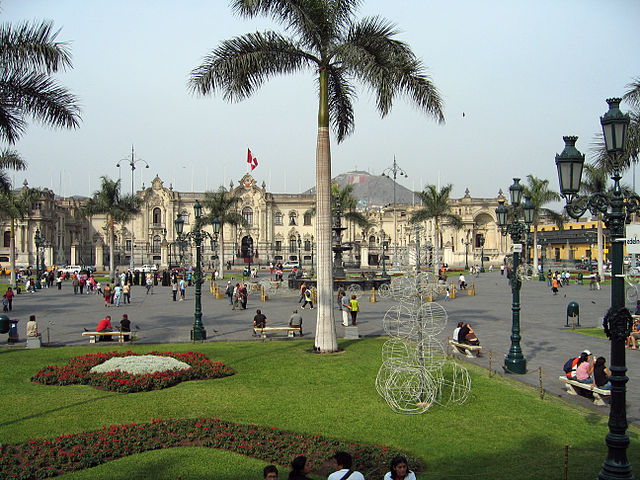The period from March to May 2023 witnessed a rise in Chile’s national unemployment rate, reaching 8.5%. This increase marked the seventh consecutive annual rise after a prolonged period of steady decline. Analyzing these economic indicators from a broader perspective can shed light on the underlying factors and potential policy solutions to stimulate economic growth and reduce unemployment.
Unemployment Trends and Labor Force Dynamics
During the specified quarter, Chile’s unemployment rate stood at 8.5%, reflecting a 0.7-percentage-point increase over the past twelve months. The rise in the labor force (2.8%) surpassed the growth rate of employed individuals (2.0%), resulting in a 12.3% increase in the number of unemployed persons, predominantly influenced by jobless individuals (15.0%).
Moreover, participation rates and employment rates continued to increase, albeit at a slower pace, reaching 60.9% and 55.7%, respectively. On the other hand, the population outside the labor force experienced a 1.9% decline, suggesting a potentially more active labor market.
When considering gender disparities, the unemployment rate for women reached 9.1%, reflecting a 0.6-percentage-point increase over the past year. However, their participation rate (51.3%) and employment rate (46.6%) also increased by 1.5 and 1.0 percentage points, respectively. For men, the unemployment rate stood at 8.1%, with an 0.8-percentage-point increase. The participation rate (71.0%) and employment rate (65.2%) for men showed marginal improvements of 0.8 and 0.1 percentage points, respectively.
Employment Growth and Sectoral Analysis
The increase in the number of employed individuals was influenced by both women (3.2%) and men (1.2%). Specific sectors that contributed to this growth included healthcare (10.4%), commerce (3.7%), and transportation (8.7%). Conversely, sectors such as household employers (-12.0%), construction (-3.7%), and real estate activities (-16.2%) experienced declines. Positive employment effects were observed in various occupational categories, including formal wage earners (2.5%), informal wage earners (6.9%), and self-employed individuals (1.1%).
Informal Employment and its Implications
Informal employment in Chile increased to a rate of 27.4%, indicating a 0.1-percentage-point rise over the past year. This growth in informal employment was driven by both women (4.0%) and men (0.7%). The prevalence of informal employment carries implications for labor market conditions, such as lower wages, limited job security, and reduced access to social benefits. Addressing this issue requires policies that promote formal employment, encouraging entrepreneurs to participate in the formal economy.
Seasonal Adjustments and Underutilization of Labor
Accounting for seasonal factors that affect labor market conditions, the seasonally adjusted unemployment rate reached 8.3%, a marginal decrease of 0.1 percentage points compared to the previous moving quarter. Measuring the total number of hours effectively worked by employed individuals, the volume of work increased by 1.5% over the course of twelve months, with an average of 38.4 hours worked.
The combined rate of unemployment and potential labor force, encompassing unemployed individuals, potential labor market entrants, and inactive individuals seeking employment, rose to 16.0%. This marked the seventh consecutive increase, with the gender gap reaching 4.3 percentage points, standing at 14.1% for men and 18.4% for women.
Labor Market in the Metropolitan Region
In the Metropolitan Region of Chile, the unemployment rate for the analyzed quarter reached 9.2%, reflecting a 0.9-percentage-point increase over the past twelve months. The rise in the labor force (2.1%) outpaced the growth rate of employed individuals (1.1%), leading to a 12.6% increase in the number of unemployed persons, primarily influenced by jobless individuals.
Policy Recommendations for Economic Prosperity
To promote economic growth and reduce unemployment, policymakers should consider the following recommendations:
Encouraging Entrepreneurship: Implement policies that remove barriers to entrepreneurship and create a favorable business environment, fostering the creation of new ventures and job opportunities. This may involve streamlining regulations, providing access to financing, and offering business development support.
Supporting Formal Employment: Develop policies that incentivize formal employment, providing benefits and protections to workers. This may include tax incentives for businesses hiring formal employees, promoting compliance with labor laws, and facilitating access to social security benefits.
Sector-Specific Strategies: Identify sectors experiencing declining employment and devise targeted strategies to revitalize them. This may include providing training programs to enhance skills, supporting research and development initiatives, and facilitating access to domestic and international markets.
Addressing Informal Employment: Implement measures to facilitate the transition from informal to formal employment. This may involve simplifying the registration process for businesses, offering training programs to enhance entrepreneurial skills, and providing social security benefits to formal workers.
Collaboration with the Private Sector: Foster partnerships with the private sector to encourage investment and job creation. This can be achieved through initiatives such as innovation hubs, entrepreneurship support programs, and public-private partnerships aimed at promoting economic development.
Conclusion
The rising trend in Chile’s unemployment rate calls for proactive measures to stimulate economic growth and reduce unemployment levels. By adopting a comprehensive approach, policymakers can focus on creating an environment conducive to entrepreneurship, investment, and formal employment. Implementing policies that encourage entrepreneurship, support formalization, address sector-specific challenges, and foster collaboration with the private sector will pave the way for economic prosperity, poverty reduction, and long-term sustainability.
By taking these recommendations into account and tailoring them to Chile’s specific context, policymakers can work towards enhancing economic opportunities, improving labor market conditions, and ultimately fostering inclusive and sustainable economic development for the benefit of all Chileans.










